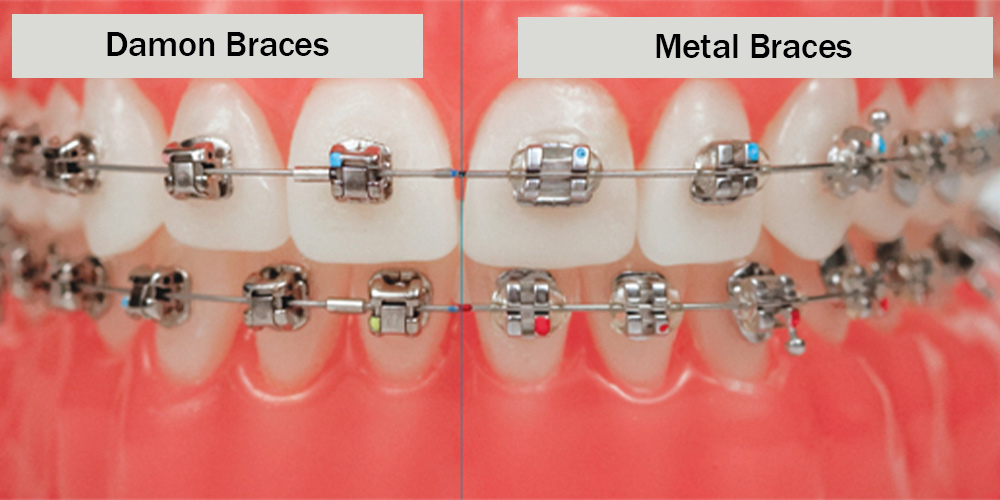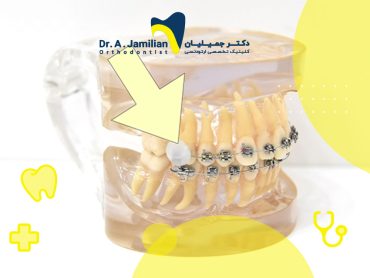Among the main tools used in an orthodontic treatment, orthodontic brackets are considered near the top. With the passage of time, these brackets move the teeth and place them in the right positions.
The orthodontic brackets mainly consist of orthodontic archwires and braces, which are placed on the teeth in the binding process, to exert pressure on them. Brackets often have either one or two tracks. Of which, orthodontic archwires will be placed on.
Effect Mechanism of Orthodontic Brackets
Below, we’ll discuss and explain the working mechanism of orthodontic brackets briefly as well as teeth movements.
Evidently, teeth are placed on gums. Below the gum tissue, there is a ligament called the periodontal ligament that surrounds the roots of teeth and holds the teeth in place. Furthermore, the periodontal ligament connects the teeth to the jaw bones.
In the orthodontic treatment process, the periodontal ligament is pressured in one direction and is tensioned in the opposite direction by orthodontic brackets. As a result of these actions and reactions, a tooth would be loosened in its place and is then fixed on the position to which it tends.

An Introduction to Orthodontic Brackets
In orthodontics, brackets are utilized to improve the connectivity of orthodontic archwires to teeth. Moreover, braces are used as the tools to transmit force to teeth and move them to a position of interest. A brace consists of an archwire (or arch wire) and a bracket. The brackets are connected to teeth through specific composites. An orthodontic bracket is responsible for taking care of the archwire and transmitting the wire force to teeth.
There are various types of braces, with each being unique. Patient’s, get to select different orthodontic types.
Brackets are classified as different categories in terms of their constituent materials, connection methods, and placement on teeth.
Metal Orthodontic Bracket
The metal bracket is the most common and most widely used type of orthodontic brackets. This bracket is made of stainless steel. Due to the power including high resistance, minimum abrasion and dozens more; it is considered the best option for most dental deformities.
The metal bracket is recyclable and can be re-sterilized for use, so it is less expensive and more cost-effective than the other types of orthodontic brackets.
The only problem with this kind of bracket is its visibility and dissatisfaction with its effect on patients’ appearances.

Lingual Brackets
This type of orthodontic bracket is placed inside the inner walls of teeth toward the mouth hole and the tongue. The most important advantage of this bracket is aesthetics, for the lingual bracket is placed behind teeth, so it is not visible when a patient talks or laughs.
The lingual orthodontic bracket is more expensive than the common metal bracket. It is also much more difficult to implement than the other types of brackets. Its periodic adjustments require longer periods of time.
The lingual bracket is not also considered very efficient in the severe irregularity of teeth.

Self-Opening Bracket or Damon Bracket
The self-opening bracket or the Damon orthodontic bracket is considered an advanced type of brackets. There are zero rubber bands or O-rings are used in this type of bracket. Allowing patients to feel more comfortable, as it doesn’t draw much attention. Making it a popular choice due to maintaining aesthetics. Additionally, these brackets require shorter periods of treatment in most cases than the other types of brackets.
In the Damon orthodontic bracket, pressure is exerted on the orthodontic archwire through a short spring, and the teeth are moved at a relatively low speed. This type of bracket does not need further adjustments or more pressure, so fewer sessions are required to visit an orthodontist in this case.
Since O-ring rubber bands are not used in this type of orthodontic bracket, it is easier to clean the teeth and maintain oral hygiene.

Ceramic Orthodontic Bracket
The ceramic orthodontic bracket is made from aluminum oxide, a material that resists effectively against pressure. However, the ceramic bracket is not very resistant to fracture. In fact, the ceramic orthodontic bracket may break during stages of treatment.
Compared with metal brackets, this type of bracket is popular with specific patients due to having certain apparent features, drawing no attention, and requiring a short period of treatment.
Due to the advantages, the ceramic bracket is priced higher than the metal bracket. Along with additional effort and higher levels of oral hygiene due to its bright color.

Plastic Orthodontic Bracket
The plastic bracket is utilized when a patient is unwilling to use the metal bracket and wants his/her teeth to seem natural during the orthodontic treatment. In fact, the plastic bracket is classified as a type of the fixed orthodontic brackets. It is usually white or colorless. The only disadvantage is that its color changes as a result of eating food.
Different types of colorful orthodontics are implemented with the fixed plastic brackets.

When choosing the perfect bracket for yourself, it’s recommended to consult with an orthodontist. Not only for making the right decision based on specific criteria. Such as aesthetics and smile design correction. Along with aesthetics, there is medical criteria as well (such as dental deformities). Including (e.g., irregularity of teeth), type of bite disorder, cost of orthodontics, and other parameters. For instance, the fixed orthodontics is considered the best option for severe maxillofacial deformities. It is also a cost-effective treatment approach.
The costs of different types of orthodontic brackets depend on the types of materials and maintenance expenses. For instance, ceramic and plastic brackets are more expensive than the other types with respect to materials and maintenance. In particular, they require more sessions of repair and adjustment than the fixed orthodontics.







